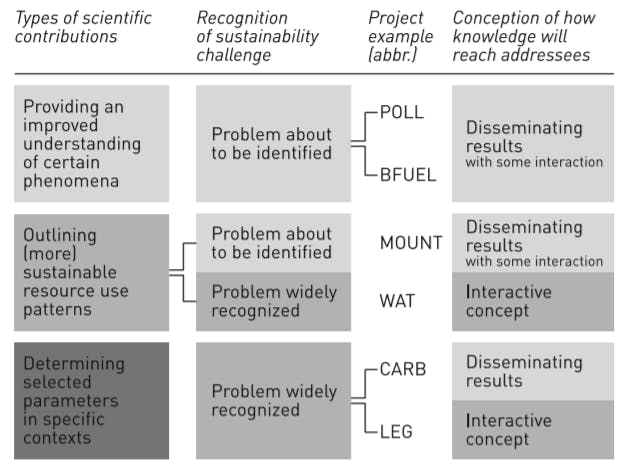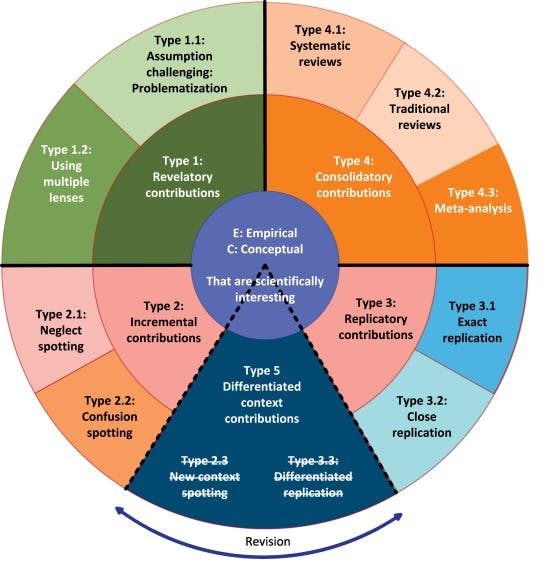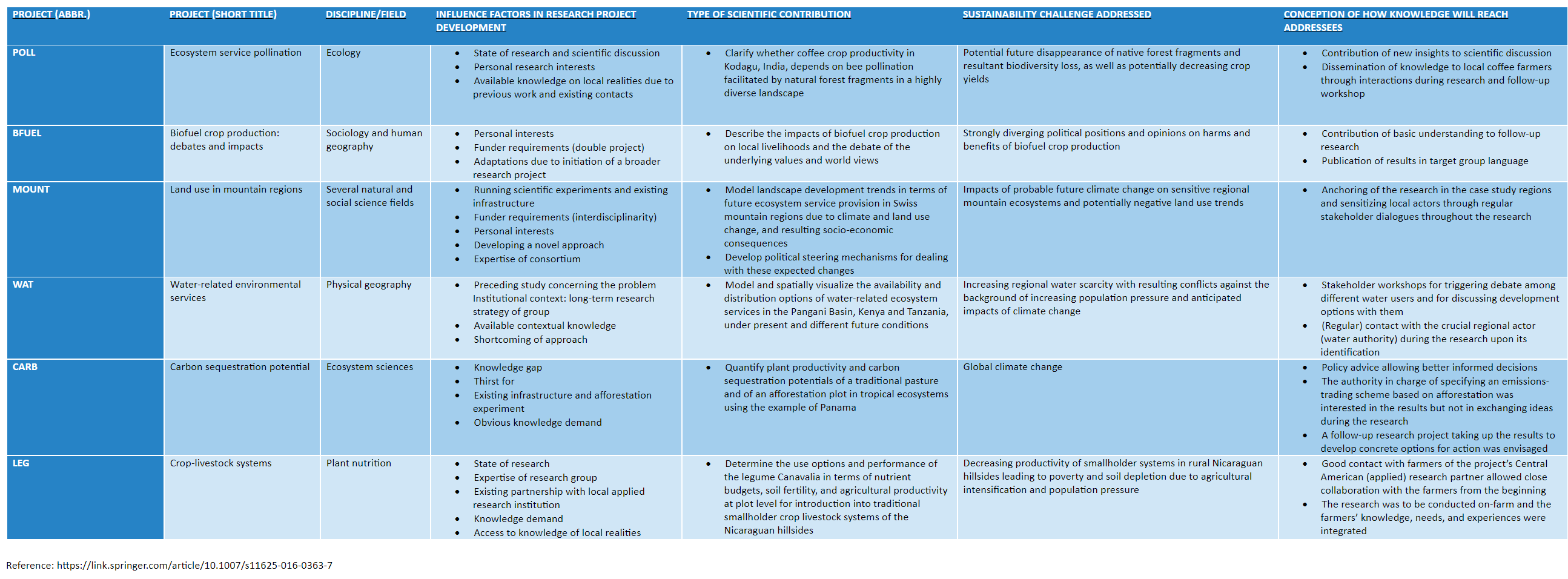Motivation(s)
Considering ways research contributes to science & sustainable development is essential in planning, performing, and presenting research.
An outline of papers on contributions to i) sustainable development and ii) science is provided below.
Aim of Science
The aim of science is producing understanding [[1](The diverse aims of science)], [2]; research is therefore scientifically interesting if it increases our understanding. Practical implications and applications - e.g., sustainable development - are another dimension of research's value resulting from gained understanding.
It should be noted practicality enables sustainably planning, performing, and presenting research - particularly in resource-limited settings where opportunity cost necessarily largely influences choice.
Ideally, R&D extends frontiers - as we go onward and forward.
Note:
R&D in this post includes necessary aspects such as market research for a business - not just novel, capital-intensive aspects such as drug discovery and device creation.
Contributions
Contribution to Sustainable Development
Description of types of scientific contribution categories [2]:
Providing an improved (fundamental) understanding of certain phenomena involves identifying cause-effect relationships or deepening the understanding of behavior patterns and their drivers. If directed at sustainable development, it extends the knowledge base, which may eventually inform judgments and decisions regarding how we meet our needs.
Research **outlining (more) sustainable resource use patterns **builds on scientifically well-described phenomena. Different disciplinary knowledge bases are integrated to develop a bigger picture.
**Determining selected parameters in specific contexts **builds on generally well-described phenomena but provides or deepens their understanding for a particular (local) context.
Description of sustainability challenge categories [2]:
Problems about to be identified in the real world are possible, anticipated negative consequences of current or past practices. They are not yet or only just apparent.
** Widely recognised problems **featuring relatively clear strategies to be acted upon are rather obvious and well-known, as well as uncontested in principle.
Description of categories of conceptions of how knowledge will reach addressees [2]:
Disseminating results means passing on scientific knowledge in a unidirectional manner to selected actors within or outside academia.
Interactive concepts are also referred to as mutual learning processes. Nonacademic actors' expertise, priorities, and questions are considered or even integrated into the ongoing research and regarded as relevant.
Please refer to Appendix A: Sample Research Projects for more details on the abbreviated projects.

Figure 1: Three models of how researchers frame scientific contributions to sustainable development [2]
Academic Contribution (Scientifically Interesting)
The inner circle of the diagram below shows words used to show academic contribution. Types of academic contributions are defined at two levels - i) the color key indicates category, e.g. consolidatory contributions, and ii) the title indicates sub-category, e.g. meta-analysis, traditional review, systematic review. Figure 2 uses the sub-categories in Figures 3 and 4 and the conceptual model categories in Figure 4.
Figure 2: Conceptual model: semantic strategies used in claiming academic contribution [3]
The figure below shows the number and percentage of papers containing keywords to show a specific academic/scientific contribution type. Both empirical (88%) and conceptual (12%) papers were included in the analysis.

Figure 3: Conceptual model: dimensions of contribution in industrial marketing (with sample counts and percentages of usage) [3]
Key: First number and percentage: Papers containing this strategy.
Second number (in italics): Papers containing this strategy as a free-standing strategy.
N = 488.
Notes [3]:
*'Free-standing' – is where the contribution was predicated on a single of the eleven sub-contribution strategies *
The categories are non-mutually exclusive
Based on this analysis shown in Figure 3, the paper proposes a new conceptual model in Figure 4 below. Specific words per category are shown in Figure 2.
In the new conceptual model, new context spotting and differentiated replications become potential sub-categories of a new category, "differentiated context contributions".
Differentiated context contribution as a category arises from disagreement on contradistinction between its two categories, which are shown in strikethrough to show they may be distinct sub-categories, but this wasn't supported by research done in the paper. [3]

Figure 4: Final conceptual framework [3]
Practicality
I first encountered these papers while doing my honors project - they helped me plan and communicate the academic contribution of my work.
An awareness of how research contributions to sustainable development and science can help authors have more precise objectives for publications, reviewers and examiners adjudicate work based on its contribution, and curators curate a well-balanced mix of contributions in collections.
Furthermore, viewing the aims of science as understanding and being more mindful of the importance of opportunity cost in directing research was a paradigm shift that made me engage with research at a deeper level. I hope awareness of this perspective will do the same for other learners, resulting in impactful research.
References
[1] The diverse aims of science
[2] Epistemic Goals



